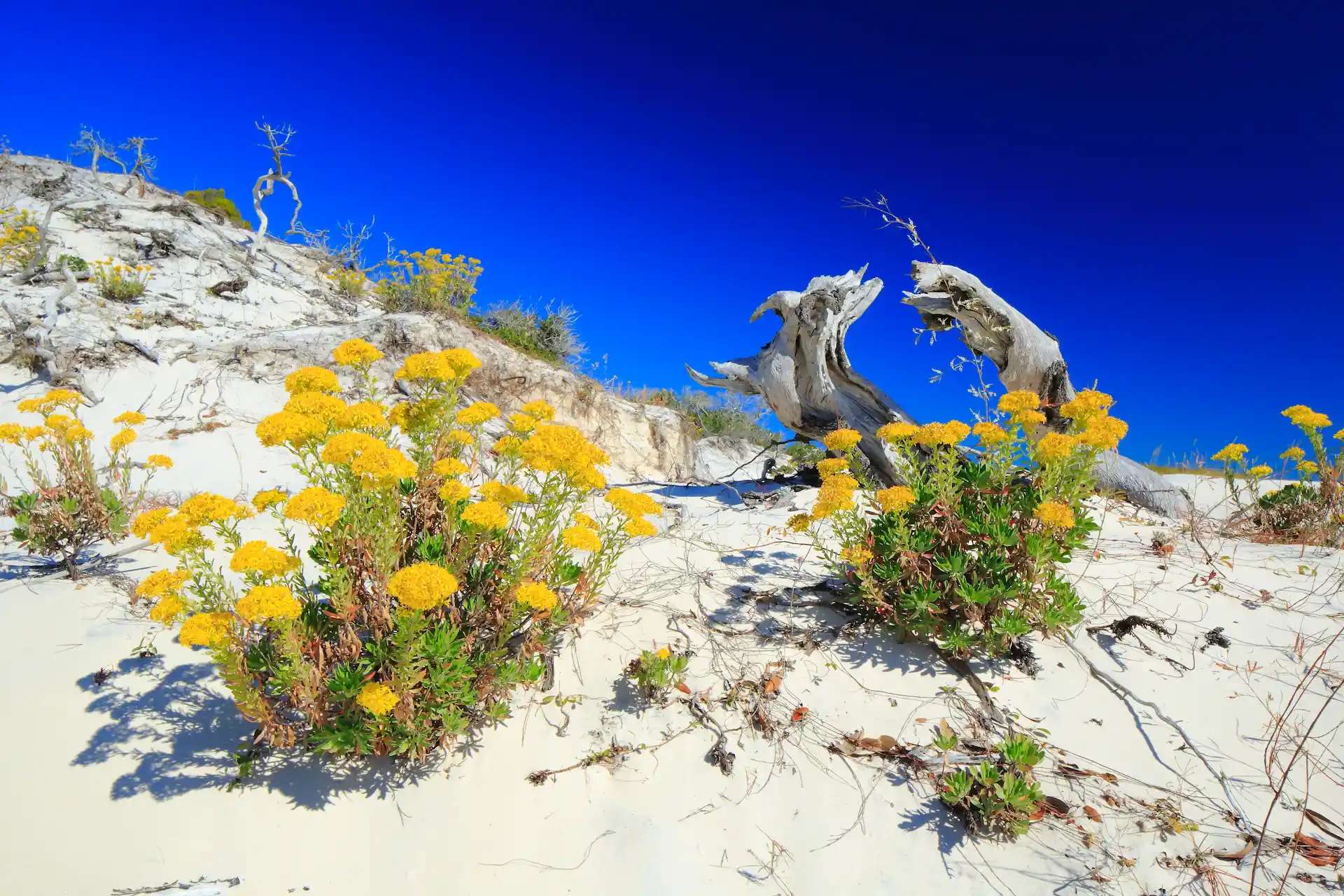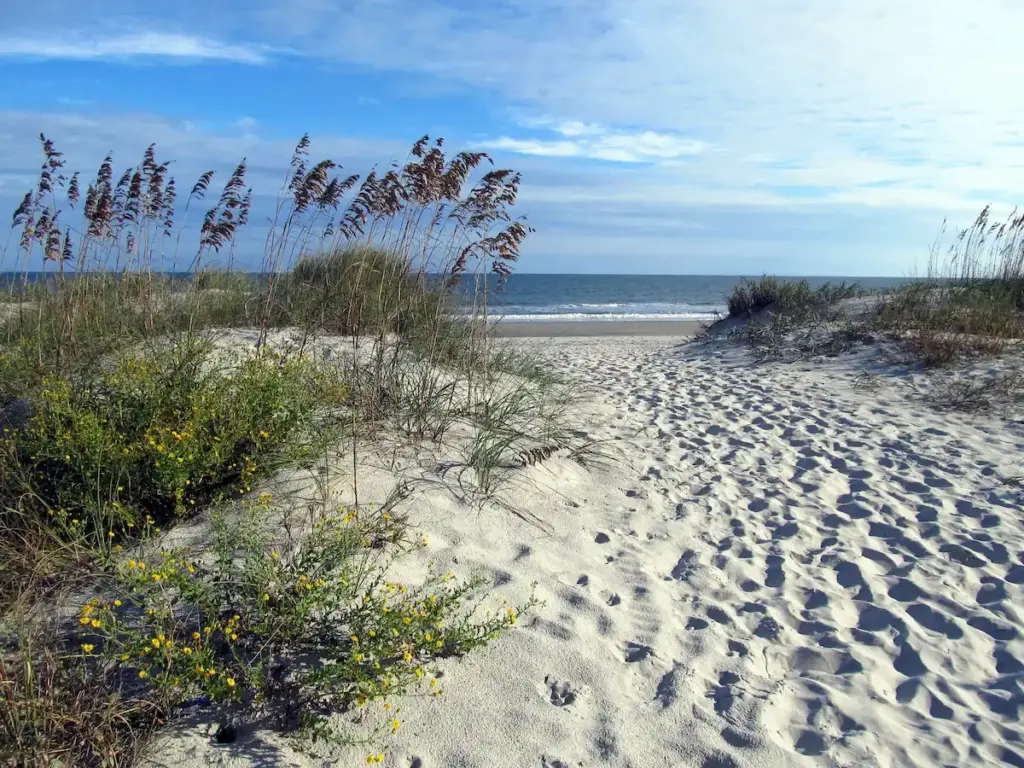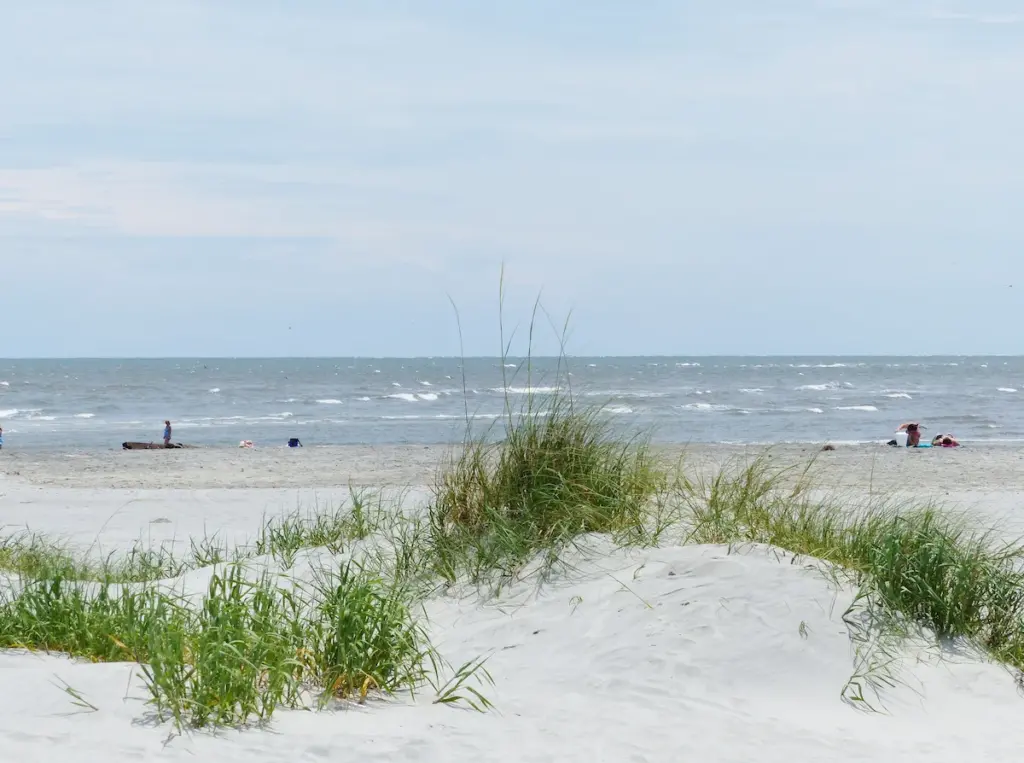What is a Sand Dune?
Learn more about the importance of sand dunes

Along the sandy beach, you’ll find seashells, tiny crabs and—if you look up in the sky—gulls flying overhead. But a little distance from where the ocean meets the land, some beaches have sand dunes. These large mounds of sand are a bit puzzling. How do they stay formed into big hills? Why don’t they collapse or fall apart? And how do they form in the first place? Let’s explore!
Get Ocean Updates in Your Inbox
Sign up with your email and never miss an update.
What are Dunes?
For the purposes of this blog, we’ll be exploring coastal sand dunes—not desert sand dunes (or the movie Dune).
A dune is a mound of sand formed by the wind, usually along the beach. Dunes form when wind moves sand into a protected area behind a structure.
As sand dunes grow slowly, colonizing plants are given the time they need to take hold and grow. Plants like sea oats, sand spurs and beach morning glory will take hold, and their deep roots will help strengthen the dunes and help hold sand over time. When sand dunes are left alone (when people don’t walk over them or disturb them) nature can take its course.
Once the colonizing plants have a firm hold of the sand, additional organic material collects and breaks down. This fertile ground now allows for even more plants to grow and inhabit the dunes. Miraculously, the sand dune now has woody plants such as the palmetto, wax myrtle, beach rosemary, cabbage palm and others—further strengthening the dune and becoming what is known as a scrub zone. The oldest dunes may be colonized by trees such as the live oak and slash pine to create a maritime forest known as a hammock.

Habitat
Sand dunes provide crucial habitat for several different coastal species. I saw an amazing diversity of wildlife when I visited Jockey’s Ridge State Park in North Carolina—427-acres with the tallest sand dunes on the east coast!
Many species of insects live in the sand, including beetles, moths, wasps and crickets. There are also mammals found residing in sand dunes like foxes, rodents and opossums. You can find a variety of reptiles—lizards, snakes and even sea turtles—that nest in sand dunes.
Storm Protection and Erosion
Sand dunes play an important role in protecting coastal communities from storms. Sand dunes provide protection against storm surges and high waves, which prevent or reduce flooding and infrastructure damage.
Sand dunes are some of the first lines of defense in the face of coastal storms. As ocean waves hit a dune during a big storm, the dune’s sandy sediments move and shift. This ocean wave’s energy is absorbed by the sand dune, weakening the wave and thus protecting the landward areas from the full force of the storm.
Coastal communities with healthy and in-tact sand dunes oftentimes sustain less damage from storms when compared to communities without them.

You Can Help
The first thing you can do to help coastal sand dunes is to leave them alone. At the beach, always use the wooden walkway around the dunes, do not walk directly on the dunes. It is unlawful to harm the dunes.
And secondly, you can help keep sand dunes free of trash and litter. That’s why Ocean Conservancy leads the International Coastal Cleanup®, the world’s largest annual beach and waterway cleanup effort. You can join nearly 17 million volunteers who have worked together to collect more than 350 million pounds of trash and counting! Simply download Clean Swell® and go clean up your community, your favorite park or your local beach or waterway.